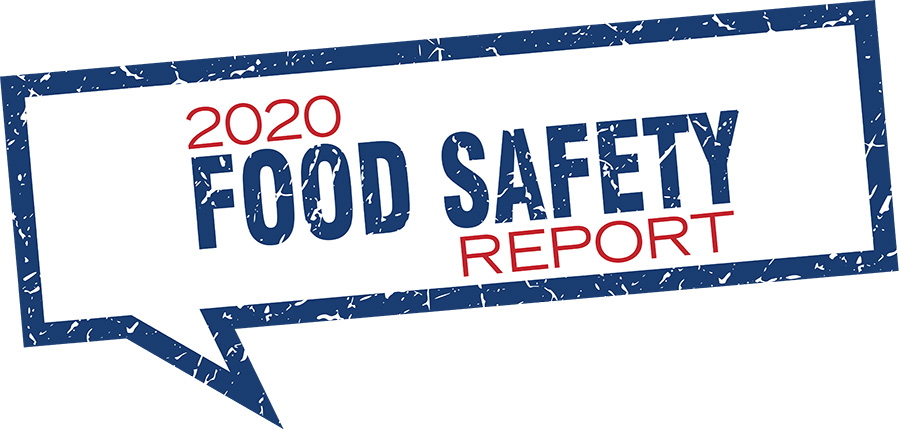Another weekly excursion to the grocery store, and I am approaching this trip as an adventure. The duration of my trips is increasing as I explore the origins of my food purchases. I want to know where the raw materials that go into my food have been produced, and that they have been transported in a safe manner that protects the integrity of the food. These thoughts consume my time as I put on my reading glasses to peruse the vast amount of information on the labels.
We are in an information- and data-rich global market. It is amazing on how much information is available to processors and consumers. Raw materials, ingredients and products are sourced from myriad locations around the globe. With source locations increasing, the logistics and supply chains are expanding and therefore becoming more complex. This complexity of global food-supply chains can be logically processed to continually improve the integrity and food safety of products. To simplify the complexity of food chains, one needs to explore links in the chains, material information and audits.

Table of Contents:
Links of the chain
Even as I indulge myself with reading labels, my curiosity is not sated with simply knowing what is in the product. I need to know where it was sourced. This is not to revisit the topic of country of origin labeling (COOL) but an approach to ensure food safety is incorporated in all links of the supply chain. Two factors regarding the global food chain are 1) more links added as products incorporate more ingredients and process, and 2) new links are being sourced for these products. Both factors need to be examined as to their impact on food safety.
With more products being designed and manufactured, additional raw materials are being used to manufacture consumer-ready foods. With increased demands and technical innovations, end products are being created with more ingredients. These materials are added links that should compel the manufacturer to ensure the supplier complies with food-safety protocols. New links should be examined closely because the history is not established.
One needs to be in awe of how the global food chain has expanded to all reaches of the planet. The more useful information we have on products, the better decisions consumers can make regarding their purchase and consumption.
Information of materials
We are in an era of information inundation. Technology has provided producers, processors and consumers a vast body of data that can be accessed in a moment’s notice. Additionally, block-chain technology is advancing, linking products and their formulation all the way back to the seeds and animals. We need to be somewhat cautious of this technology — the old axiom “garbage in, garbage out” remains relevant. Information is only as good as how it is collected and reported. For this aspect of products, the best first step is to examine the ingredient label.
While writing this article, my curiosity spurred me to select a random can of food from my pantry. The lucky product was a can of chicken soup. There are five major ingredients followed by 21 ingredients containing less than 2 percent of the total weight. Of course, I am pleased to know that chicken broth and chicken meat are major ingredients, but then I start to question not only what the other ingredients are but where they originated and how each one ended up in my can of chicken soup.
Of course, it would be virtually impossible to list the specific origins of all the ingredients on the label, and frankly, it would be even less likely all of that information would be read by a consumer (or even readable). We know block-chain technology is advancing to the stage at which raw materials are traced from end to end so the consumer will know where the material is sourced. Even if one knows the sourcing of the material, my concern with the complexity of the supply chain is how can food safety be improved? Some answers to this question reside in product labels.
As I observe other customers, there appears to be a vast spectrum of shopping methods. Some shoppers refer to lists and methodically navigate the aisles. This process is contrasted with the individual racing a clock to fill their basket and get out of the store. In the middle of these extreme examples are most shoppers, who select favorite brands, compare prices and occasionally read labels. Drilling further down into these labels are the nutritional facts.
The older I get, the more I reference the Nutritional Facts label on products. These fact panels have become more consumer friendly over the years and provide useful data for making nutritional choices. Information on fat, cholesterol, sodium, carbohydrates, protein, vitamins and minerals is provided. These are necessary for the consumer but more important to me is the ingredient list.
Audits
The word “audit” typically conjures a negative reaction. Most people relate audits to the Internal Revenue Service (IRS). Our industry is more in tune with food-safety audits, safety audits or employment audits. Food-safety audits and verification by a number of third-party entities is an important part to ensure the integrity of food safety.
“Audits should be looked at as a chance to improve. If a facility has documented standard operating procedures (SOPs) and systems that have been validated and adhere to the regulations, there is no reason for the audit to be confrontational or tense. It is an opportunity to improve. Ultimately, you are all working toward the same end: a product that can consistently be made safely, is enjoyed by consumers and earns a profit, says Ruth Bitterman, senior quality manager, North America, at H&H Group.
One needs to consider that audits are a snapshot in time. Of course, an organization can scramble and pull together documents and processes to pass an audit, but such action will only delay the inevitable failure. It is simple, “say what you do and do what you say.” Those are fairly simple words to live by but not all suppliers abide or know this rule. As a consumer, I am increasingly concerned with the safety of the food I consume. Knowing responsible processors employ audits to improve their processes and validate the processes of their suppliers alleviates this concern.
“This is where the style of audit may be important. Instead of completing audits to address what all facilities already expect and prepare for, possibly the audit should look at the industry and a facility’s risks and vulnerabilities. If they are importing raw materials, where are those raw materials coming from? What types of things are in the soils that are of concern in that county, region? What safeguards does the raw material supplier have in place? What are some of the concerns in this region that are not items of concern in our own regions? Audit for the items that are a challenge and dig deeper. Go lighter on the areas that have been audited year in and year out,” Bitterman says.
I hope my shopping adventures on product curiosity were relatable and possibly resonate with you. As an industry, we can enhance the safety of products by focusing on the individual links of the supply chain. The global market will continually increase in its complexity. Next time you go shopping, take a few moments to observe shoppers exploring the safety of food products. NP




Report Abusive Comment